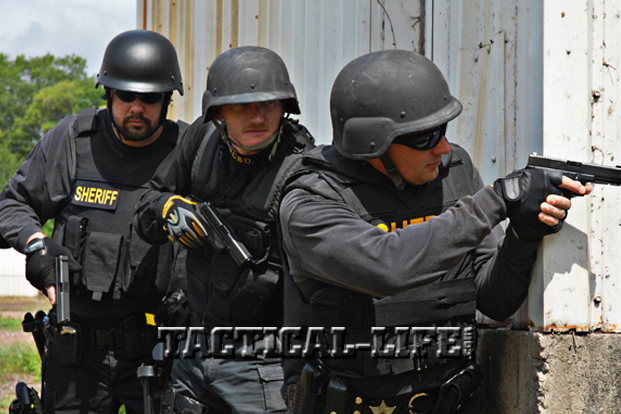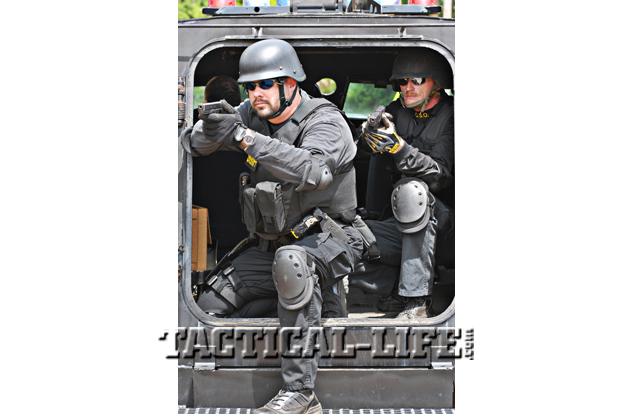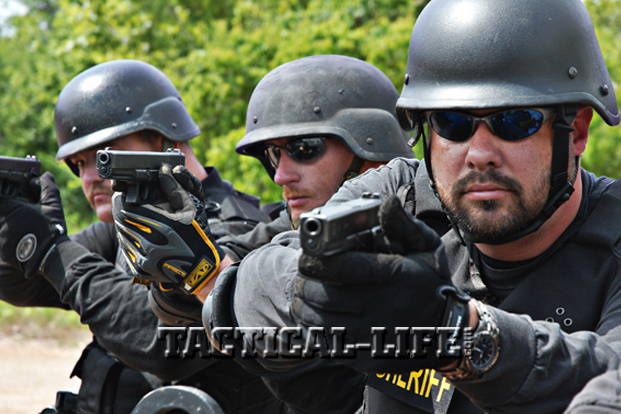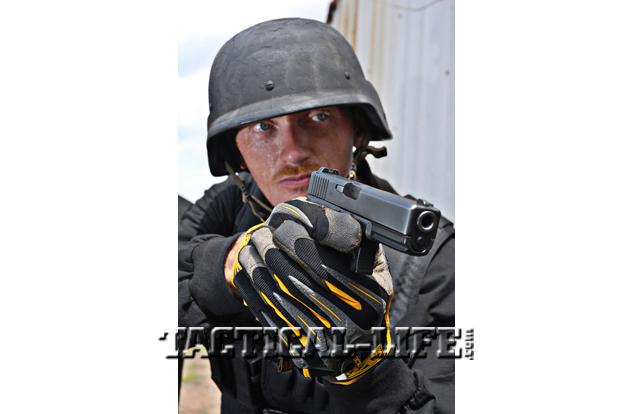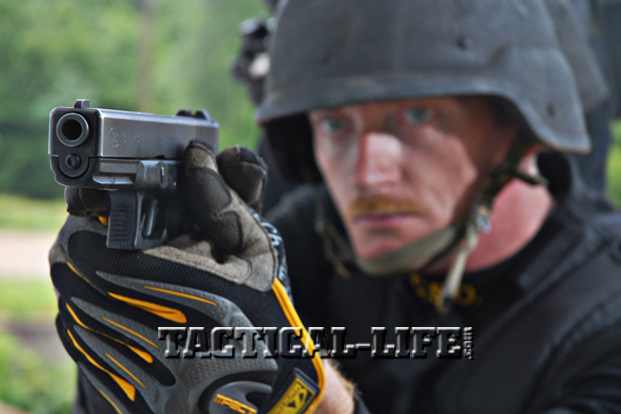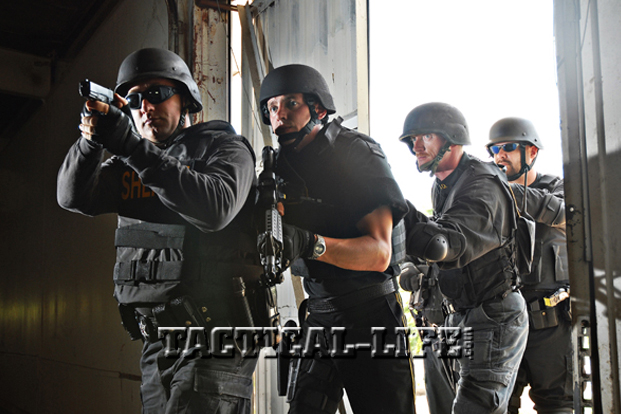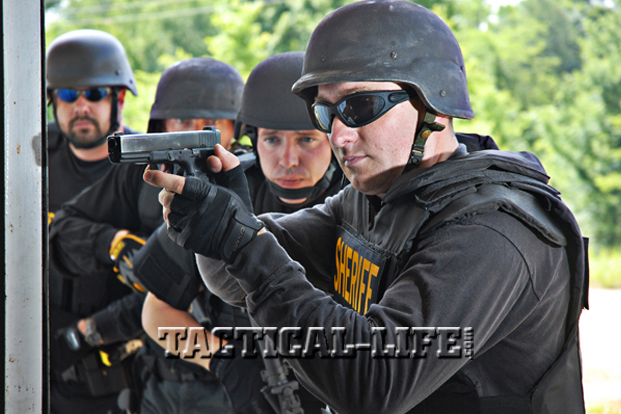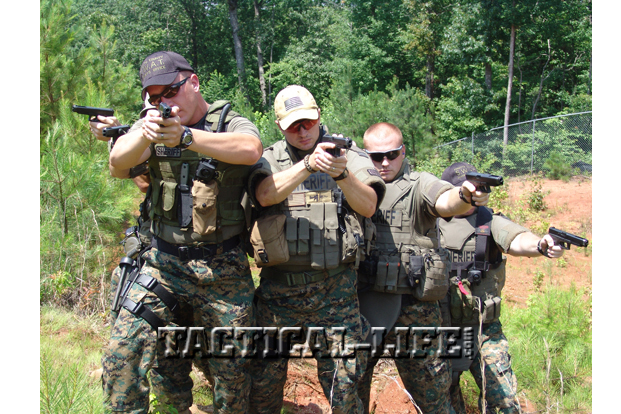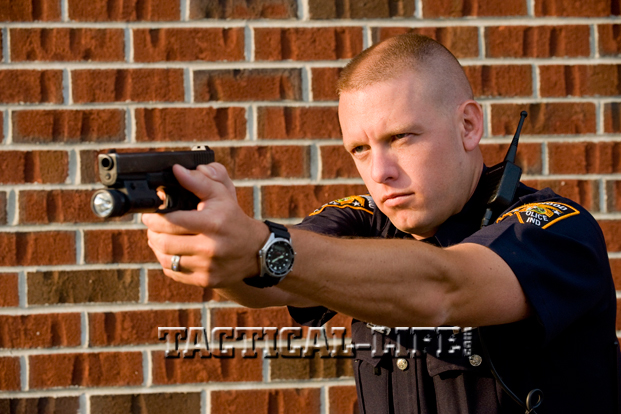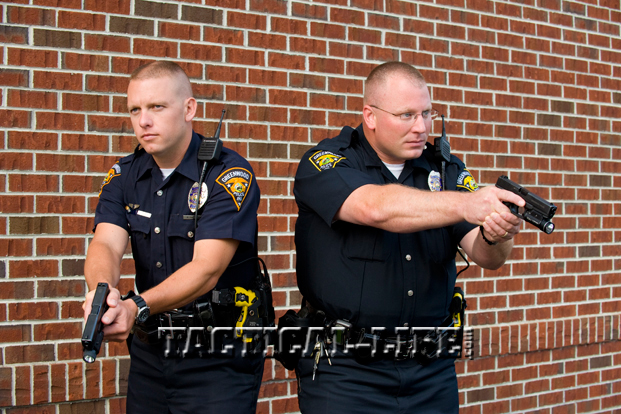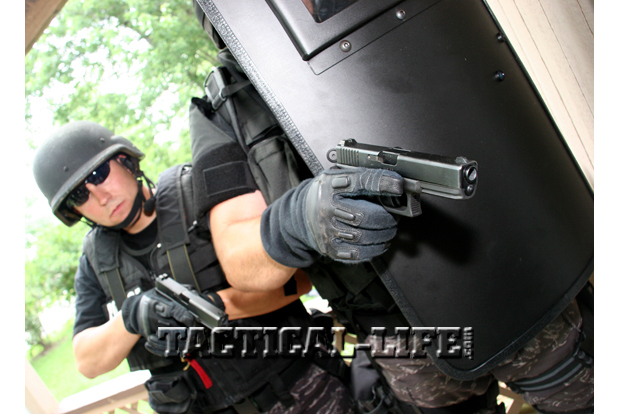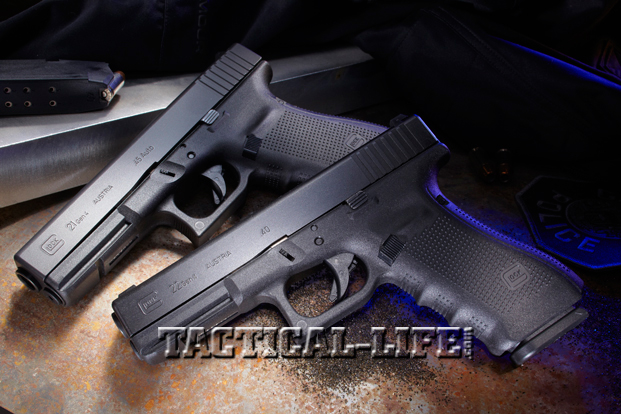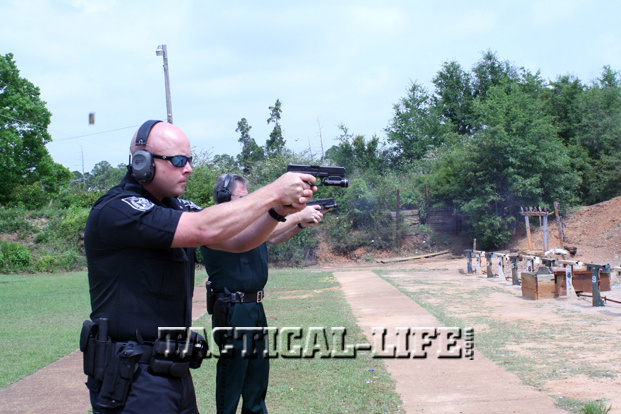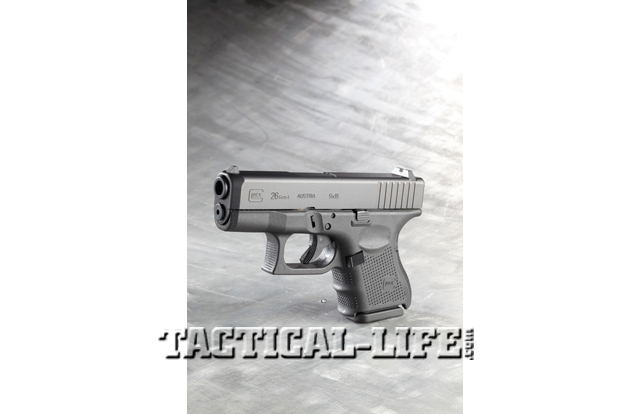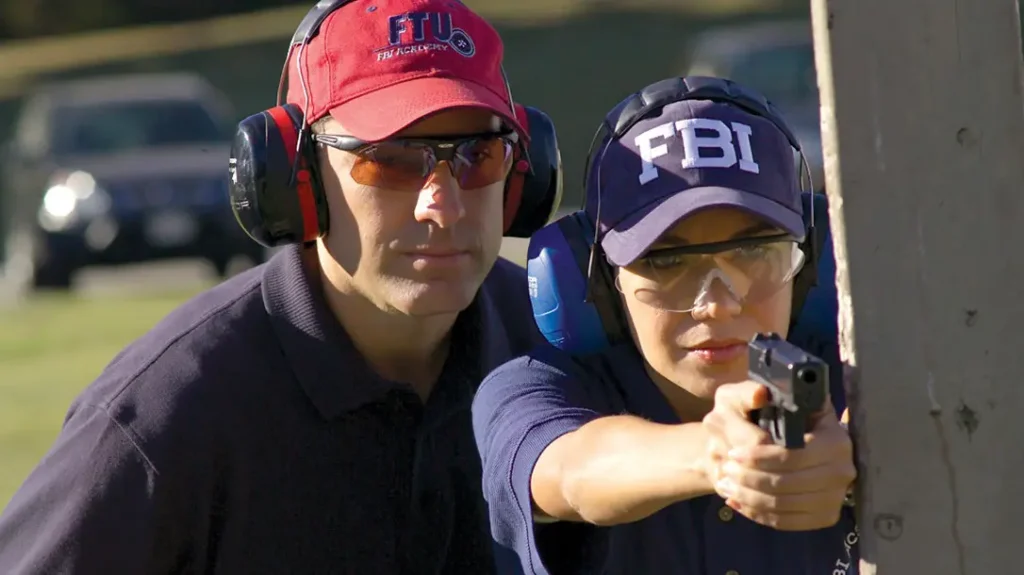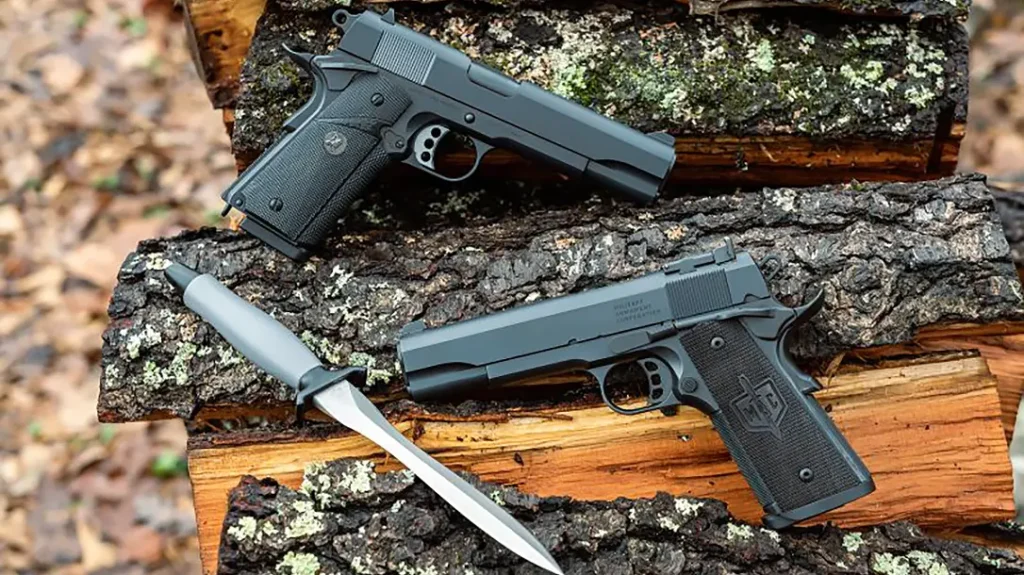We firearms instructors get a lot of questions about guns. One recurrent query is, “Why do so many cops carry Glocks?” The answer runs longer than the question.
It’s no secret that the Glock has long been the predominant police sidearm in the United States. Standard issue for the FBI for well over a decade now, Glocks are also popular within the nation’s three largest municipal police departments, those of New York City, Chicago and Los Angeles. In frozen Alaska, the Anchorage Police Department issues the Glock 21 in .45 ACP, and the standard weapon of the Alaska State Troopers is the .40-caliber Glock 22. In steamy Florida, the State Highway Patrol carries the Glock 37 in .45 GAP, and the police in Jacksonville and Miami are issued Glock 22s in .40. In burning desert climes such as Arizona, the police of Phoenix and Tucson all carry Glock 22s.
Engineered for reliability in hostile climates, the Glock has performed well in all of these places. Its groundbreaking combination of design features has spawned the rise of many similar pistols by other manufacturers—and a design that spawns its own genre obviously has a lot going for it.
Street Proven
Advertisement — Continue Reading Below
Though the pistol is the most conspicuous item on a uniformed officer’s duty belt, it is the second least-often used. (The least often used, of course, is the spare magazine pouch.) While some see cops as “society’s gunfighters,” that’s far down on their list of daily priorities, since most officers will never have to fire their weapons on the street during their whole careers. Thus, firearms training is unfortunately not always the highest priority in law enforcement.
From a firearms instructor’s viewpoint, there is no easier pistol to teach an officer to use. There is no manual safety to be constantly thumbed on and off. There is no decocking lever the officer must remember to actuate after loading the pistol, or while firing it. With the traditional double-action autopistols that preceded the Glock in law enforcement, the officer had to learn two distinctly different trigger pulls: the long, heavy single-action pull that was necessary for the first shot, and the shorter, easier single-action pull for every shot thereafter. With the Glock, there’s a relatively short and light pull for every shot—only one trigger manipulation that the user needs to master.
There is also a versatility factor. Even a full-sized Glock is roughly the size of what was considered a compact autopistol by yesteryear’s standards, the Lightweight Colt Commander, but a full-sized Glock is lighter still. With the introduction of the compact Glocks, such as the 9mm G19 in the late 1980s, and the subcompact “baby Glocks,” such as the G26, in the mid-1990s, this versatility greatly increased. A compact Glock, such as the .40-caliber G23, was big enough to serve as a uniform service pistol, but small enough to be easily concealed in plainclothes by a detective or off-duty cop. Moreover, it allowed the duty pistol and the backup gun to share identical handling characteristics, and even share ammunition: The smaller Glock in the same caliber as the bigger service model will work with the latter’s longer magazines. One state police agency today issues each of its uniformed troopers a pair of Glock .40s: the 5.3-inch-barreled G35 for the uniform security holster, and the little 3.6-inch-barreled G27 as a hidden backup gun. Another takes the same approach with .45 GAPs, issuing a Glock 37 for the duty holster that is worn in tandem with a subcompact Glock 39 in a concealed ankle holster. This approach also ensures that all armed personnel have a small, conveniently concealable sidearm with which they are deeply trained for off-duty wear.
Advertisement — Continue Reading Below
Gaining Ground
Glock USA put together an instructor school with an all-star cast of master “trainers of trainers,” people like Jerry and Cathy Lee and Emanuel Kapelsohn. This was a bonus for departments that adopted Glocks. They got not only the guns, but also top-tier training and the civil liability advantages that came with it.
There’s also the matter of maintenance. A police gun has to work every time; reliability is the non-negotiable baseline of selection. Most police departments have one or more in-house armorers, personnel trained and certified by the gun’s manufacturer to repair and maintain the product. An armorer’s school for the older-style autos typically lasted a week. The Glock armorer’s school was, and still is, a single day.
Glock entered the American police market at a time when cops were switching en masse to autopistols from the traditional service revolver. Cops had been told since the police academy that they couldn’t have semi-autos because they were “jam-amatics” and only “our old reliable friend, the revolver” could be trusted. To overcome those trust issues and win the confidence of the rank and file, an autopistol had to be proven reliable.
Advertisement — Continue Reading Below
There were torture tests. There were Glock 17s, the only model available then, which ran as many as 100,000 rounds with high reliability. Glocks deliberately dropped from helicopters and run over by patrol cars. Glocks immersed in water, mud and sand and then fired. The results were confidence-inspiring.
Legacy & Future
Nearly three decades after its introduction, the Glock has a long-established history of reliability. An NYPD officer who goes on to become chief in another department remembers how well the Glock worked in his own agency, and when it comes time to buy new guns, leans toward Glocks for his new department. Those 100,000-round torture tests still resonate. Research outside the police world touches on experience with various guns in other sectors, such as in the military and even sport shooting. A department researcher assigned to test and evaluate new firearms can’t miss the fact that the Glock has been widely adopted as a military pistol by many of the world’s nations, nor that it has become hugely popular in sport shooting events where a lot of bullets go downrange and a pistol that jams tanks the competitor’s chances of winning. For example, year after year, 9mm Glocks are by far the most popular handguns at the national championships of the International Defensive Pistol Association (IDPA). The Glock 34 is the choice of renowned world champion shooter Robert Vogel.
Advertisement — Continue Reading Below
Well-grounded with a mature product that has long since proven itself, Glock is solidly positioned to continue its market dominance in the police sector. Glock pistols are available in .380 ACP, 9mm, .357 SIG, .40 S&W, 10mm, .45 ACP and .45 GAP, and the Gen4 series features interchangeable backstraps so users can customize their grips. Glocks remain the pistols against which other duty handguns are judged. For more information, visit us.glock.com or call 770-432-1202.
